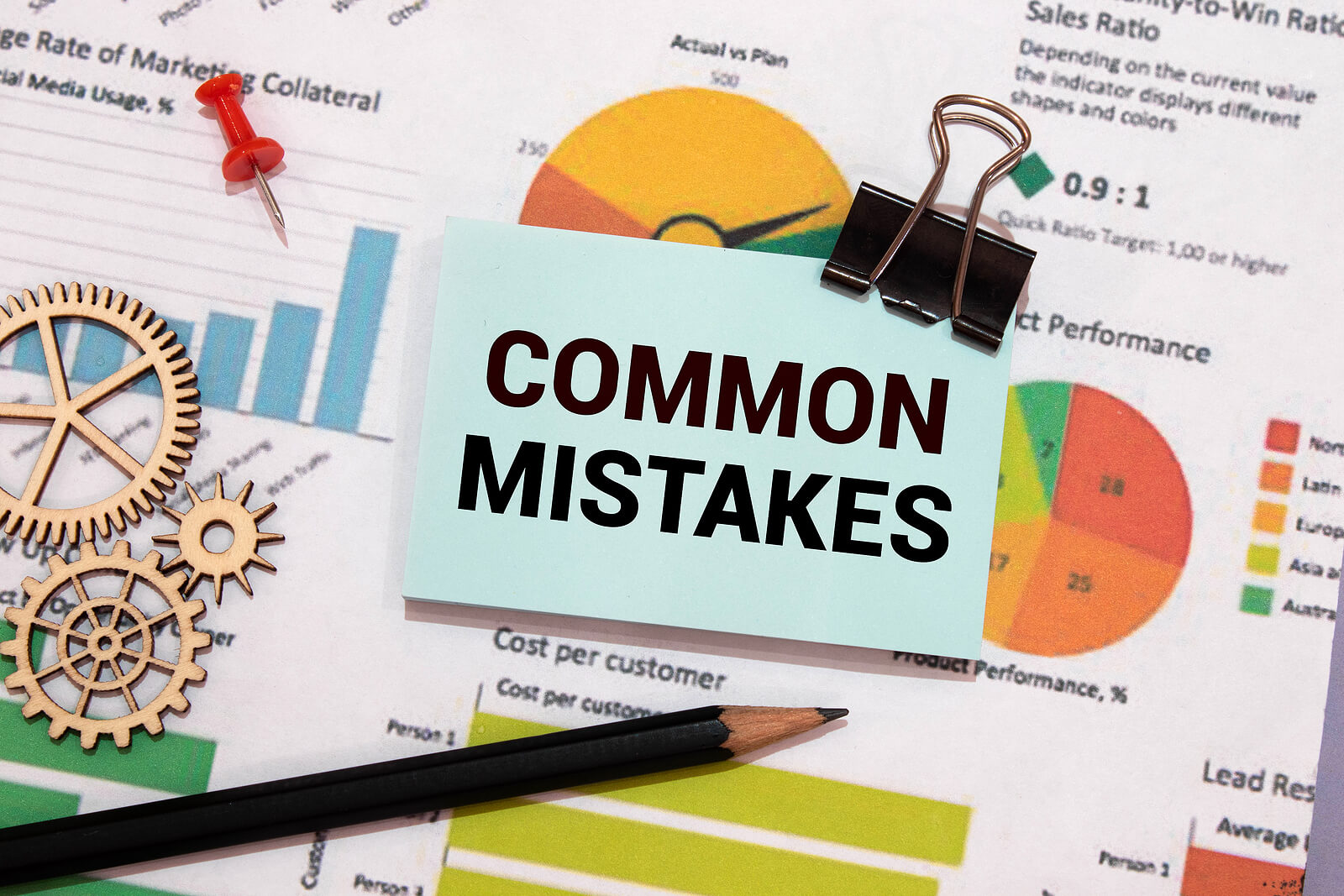
Starting a small business allows the business owner to pursue the American dream, support their family, and provide employees with paying jobs. At the same time, there are sure to be all kinds of mistakes, failures, and learning lessons that a first-time business owner might encounter throughout the journey.
When it comes to marketing, specifically, there are a handful of mistakes that business owners are prone to making. Actively avoiding and eliminating these common marketing mistakes will help you maximize your business’s profits!
1. Not having a unique selling proposition (USP)
To determine whether you have a true unique selling proposition, ask the following question: when faced with all possible choices — including doing nothing — why should a customer buy from you?
2. Not spending enough time on marketing
You should be spending roughly 25–50% of your time on marketing, particularly when you’re just starting out.
3. Giving up control of your marketing
Of course, there are routine marketing tasks that you can outsource. At the same time, no one cares more about your business than you do. Be careful not to give up all control.
4. Failing to niche down
Remember, it’s much better to be a big fish in a small pond than a small fish in a big pond. Make sure you build out your products and services for a very specific target audience.
5. Not identifying your ideal customers
If you don’t know exactly who your ideal customers are, you won’t be able to effectively advertise to them or attract them.
6. Not understanding your prospects’ biggest problems
Features are helpful, but benefits are more important. Make sure that you’re aware of your customers’ biggest problems so that you can position your products and services as the solution.
7. Being inconsistent with your marketing
Commit to your marketing strategy for a minimum of six months so that you have a reasonable sample size to assess before making changes.
8. Not selling to your current customers
Getting a new prospect to know you, like you, and trust you is no easy task. Because you have already established a sense of trust with your current customers, you should be spending most of your time, energy, and resources on them.
9. Not identifying other products to sell to current customers
Why not maximize the lifetime value of your customer by finding more products and services to sell to them? You don’t even need to develop new products. Get involved with an affiliate program that pays you a commission.
10. Failing to explore other niches that could use your products and services
Niching down doesn’t mean that you can’t bring your products and services to other markets. Research other industries where your products and services might be helpful.
11. Not asking for referrals
This is one of the easiest ways to increase your marketing effectiveness while simultaneously reducing your marketing budget. For maximum referrals, create a program that incentivizes referrals.
12. Not prioritizing customer service
Due to the explosion of social media, prospects can find online feedback and make a judgment about your company in a matter of clicks. You need to deliver world-class levels of customer service if you hope to keep your online reputation positive.
13. Only using one marketing channel
There’s no reason to avoid the many marketing channels that are available to you today. Sticking with only one marketing channel can cause you to miss out on a large segment of your target audience.
14. Not tracking and measuring your marketing results
The only way to determine whether your current marketing strategy is effective and adjust as needed is to track and measure your results.
15. Not testing your marketing campaign
It’s easy to sink thousands of dollars into wasted marketing, which is why it’s critical that you test a new marketing campaign and confirm that it works before you unleash it.
16. Ignoring the power of direct mail
Given today’s digital landscape, many business owners have abandoned direct mail. Yet, direct mail can still be highly effective; incorporate it as part of a comprehensive marketing strategy.
17. Ignoring the power of social media and text marketing
Conversely, many business owners will neglect social media marketing, text marketing, and other modern channels simply because their unfamiliarity makes them uncomfortable.
18. Not keeping an in-house customer list
Without an in-house customer list, it becomes nearly impossible to routinely follow up with your customer base. Stay organized year-round!
19. Being mediocre at sales
Marketing is only one half of the pie. Once your marketing department delivers high-quality leads, your sales department needs to be able to close them — otherwise all of your marketing efforts will be in vain!
20. Not knowing the lifetime value of a customer
Unfortunately, the lifetime value of a customer is one of the metrics that is most overlooked. This usually causes businesses to underpay for customer acquisition.
21. Abandoning what works when times get tough
When you find a marketing strategy that works, don’t stop — regardless of whether you’re bored with the method or your business is struggling.
22. Passing up free publicity opportunities
There are all kinds of ways to get free advertising for business — from press releases to local giveaways. Take advantage of these opportunities so that your marketing budget goes as far as possible.
23. Not marketing while you’re busy
It may be tempting to take your foot off the gas while you have plenty of work. Without consistent marketing, however, you’ll struggle to keep your pipeline full at all times. Make your marketing automatic!